
Meenakshi Amman Temple,gopuram
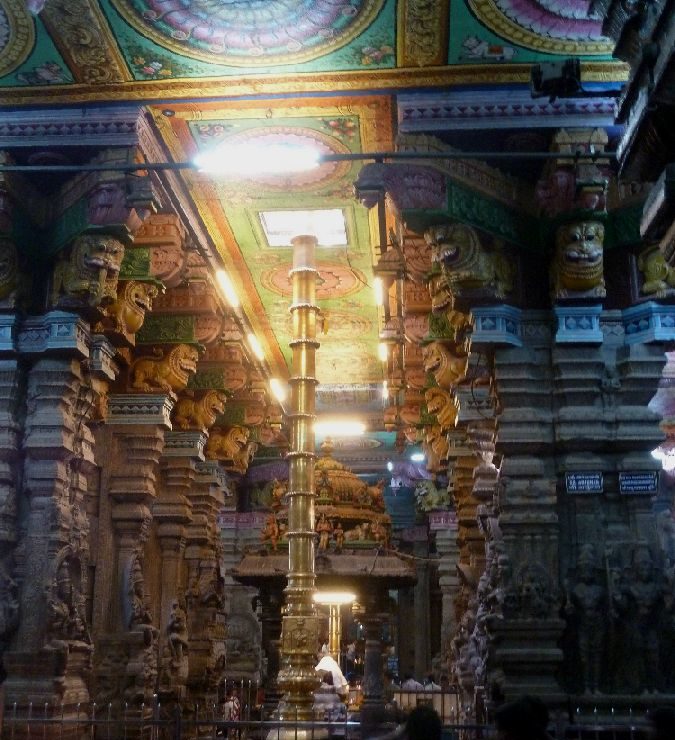
Meenakshi Amman Temple,interior
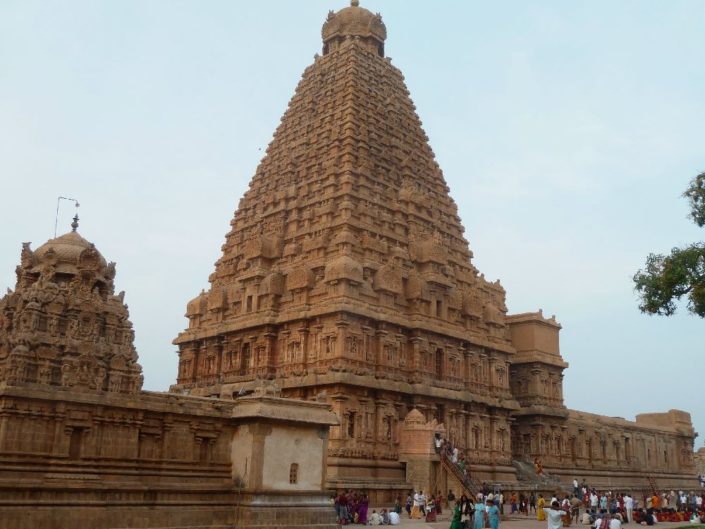
Brihadishwara Temple, Tanjore
Madurai: Madurai is an ancient city with a recorded history going back to the third century BCE, one of the oldest cities in India and the “soul” of Tamil Nadu. The Tamil culture and language go back a long way, and people here are proud of that. According to Wikipedia,
Tamil is one of the longest surviving classical languages in the world. It has been described as “the only language of contemporary India which is recognizably continuous with a classical past” and having “one of the richest literatures in the world”. Tamil literature has existed for over 2000 years.
[FROM WIKIPEDIA, “Tamil Language” (footnotes omitted)]
Tamil is a Dravidian language with about 70 million native speakers, one of a large number of languages spoken in India
The Meenakshi Amman Temple (in Madurai) is widely considered to be among the greatest of India’s temples and is reputed to have a history of over 2000 years, though the present structure was built in the 17th century CE during the Nayak Dynasty (with more ancient incarnations destroyed by invaders – reputedly by General Malik Kafur, leading the army of the Delhi Sultanate in 1310 CE). Though its early history is speculative, the Meenakshi Amman Temple is referenced in literary works of the Sangam Period. The temple has 12 great Gopuram’s (gateway towers), a traditional South Indian architectural element in temple architecture, tapering as it rises and consisting of successive tiers, each ornately & profusely decorated with statues, sculptural forms and relief elements, generally painted in bright colors. The tallest of the temple’s gopurams rises to a height of 170 feet. Let’s just say they are intricate, and a visual feast for those who are detailed-oriented. I took many pictures of the temple and its gopurams (see below) (though non-Hindus are not allowed to enter the temple’s (two?) inner sanctums). Meenakshi is an avatar of Parvati, consort of Shiva (here going by the name of Sundareswarar). There is a delightful story about the meeting of Meenakshi and Sundareswarar:
According to Hindu legend, in order to answer the prayers of the second Pandya king Malayadwaja Pandya and his wife Kanchanamalai, Parvati appeared out of the holy fire of the Putra Kameshti
Yagna (sacrifice for childhood) performed by the king. The girl who came out of the holy fire had three breasts. A voice from the heavens told the king not to worry about the abnormality and added that the third breast would vanish as soon the girl met her future husband. The happy king named the girl “Tadaatagai” and being the heir to the throne, Tadaatagai was trained carefully in all the 64 sastras, the fields of science. As the time came for Tadaatagai’s coronation, she had to wage war on the three worlds across eight directions. After conquering Brahma’s Abode, Sathyaloka, Vishnu’s Abode, Vaikunta, and Devas‘ abode Amaravati, she advanced to Shiva’s Abode Kailasha. She very easily defeated the bhoota ganas (IAST: Bhūtagana, meaning Shiva’s army) and Nandi, the celestial bull of Shiva, and headed to attack and conquer Shiva. The moment she looked at Shiva, she was unable to fight and bowed her head down due to shyness; the third breast vanished immediately. Tadaatagai realized that Shiva was her destined husband. She also realized that she was the incarnation of Parvati. Both Shiva and Tadaatagai returned to Madurai and the king arranged the coronation ceremony of his daughter, followed by her marriage with Shiva.
FROM WIKIPEDIA, “Meenakshi Amman Temple” (footnotes omitted).
Pictures of Meenakshi Amman Temple in Madurai:
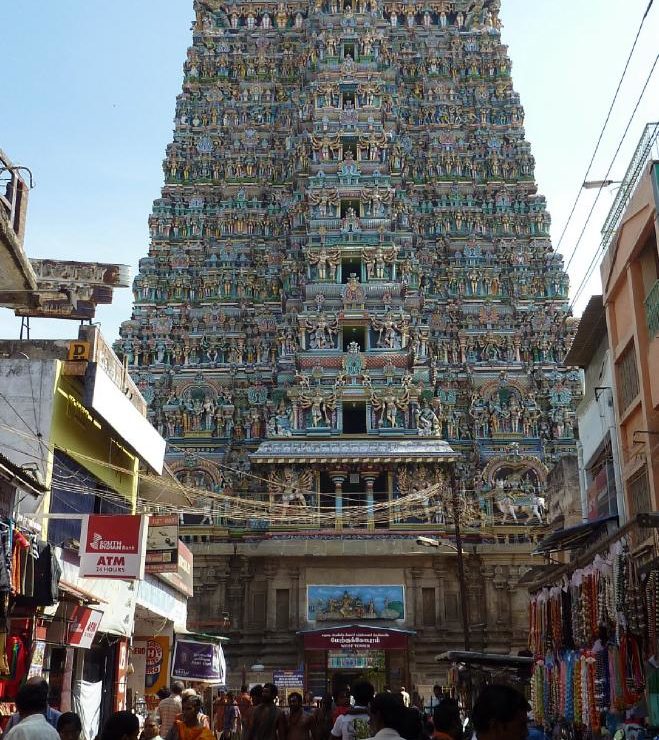
Meenakshi Temple gopuramwest tower entrance
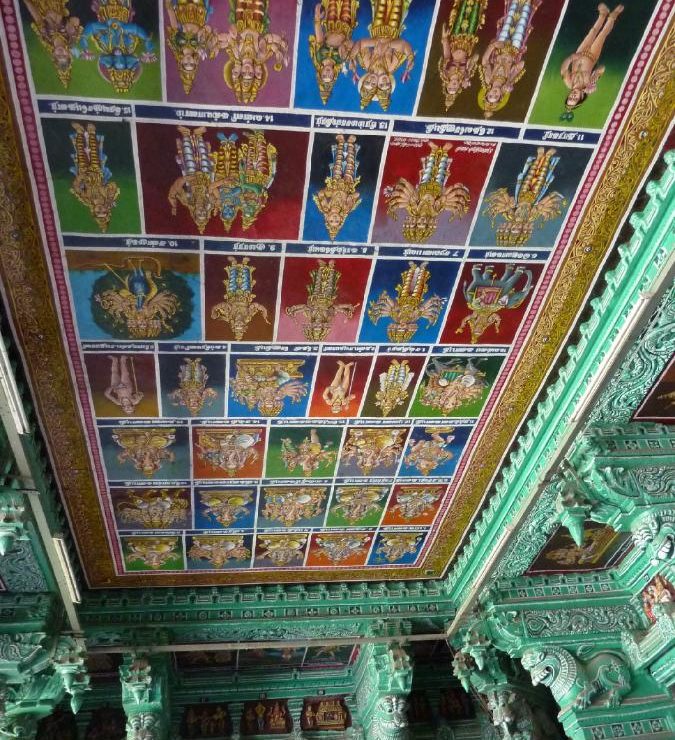
Interior detail
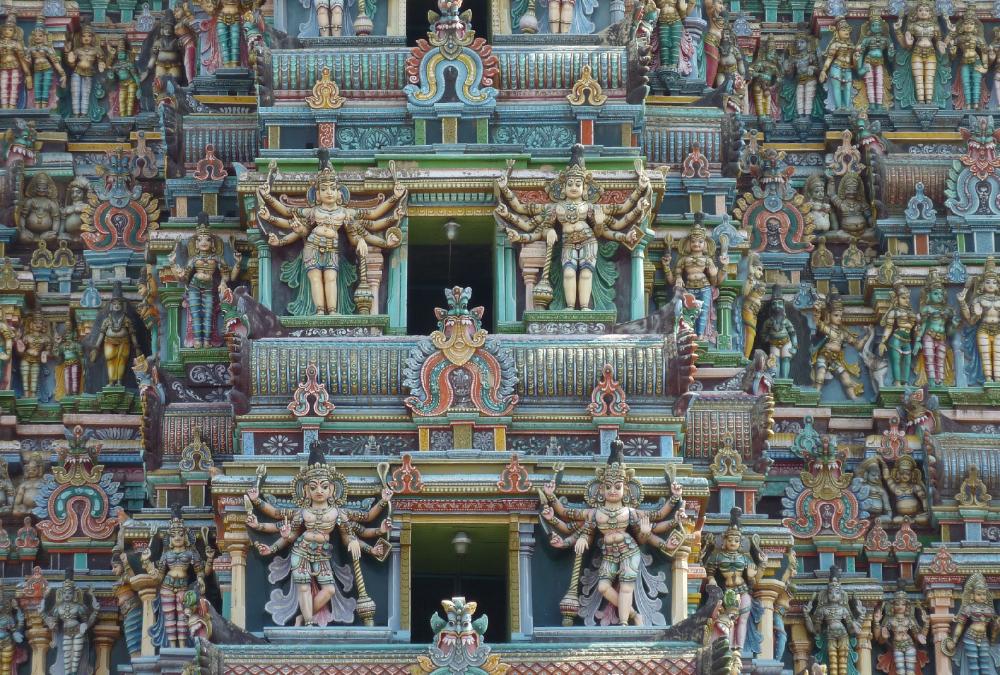
Closer view of the gopuram
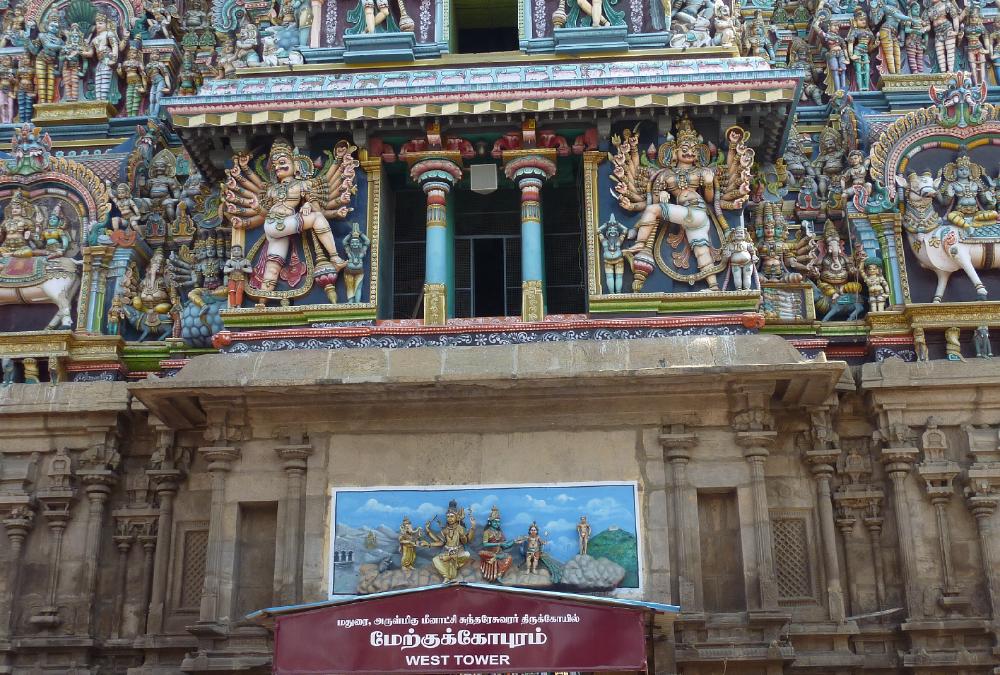
Further detail (same gopuram)
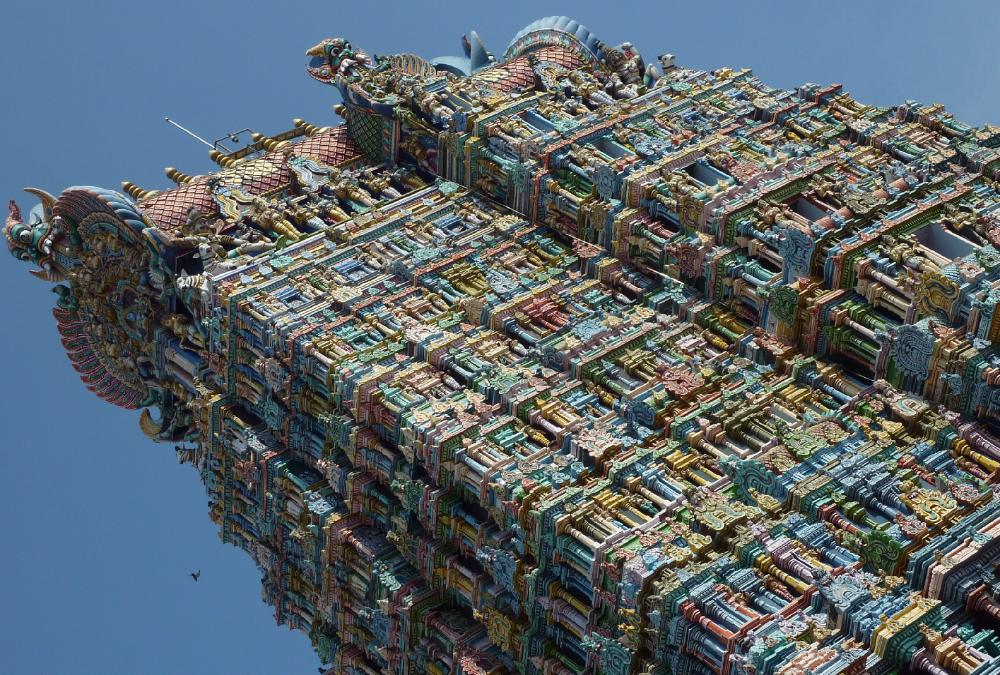
North gopuram, Meenakshi Amman Temple

North gopuram
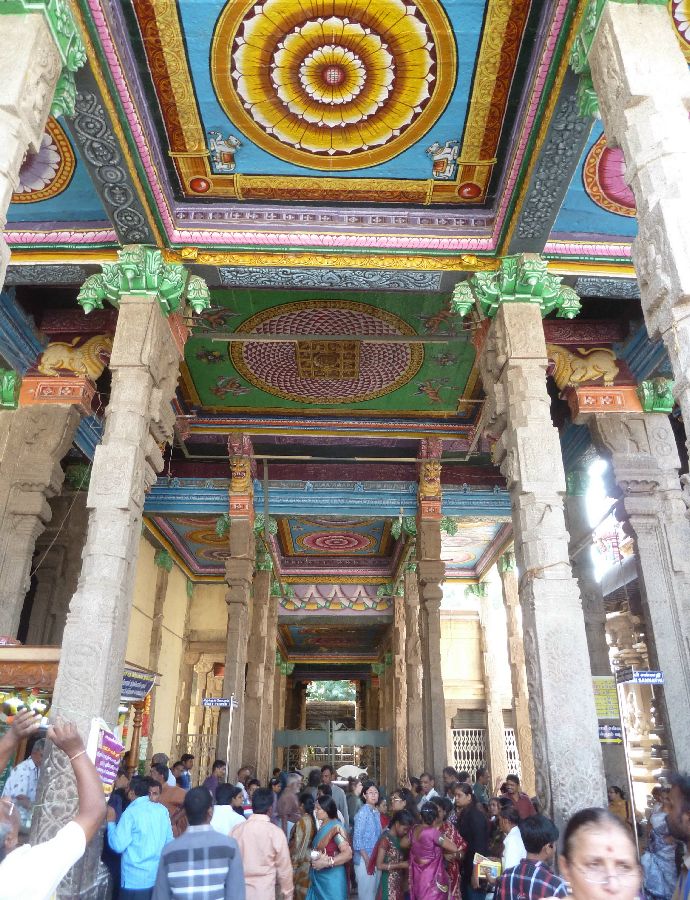
Meenakshi Amman Temple (entrance)
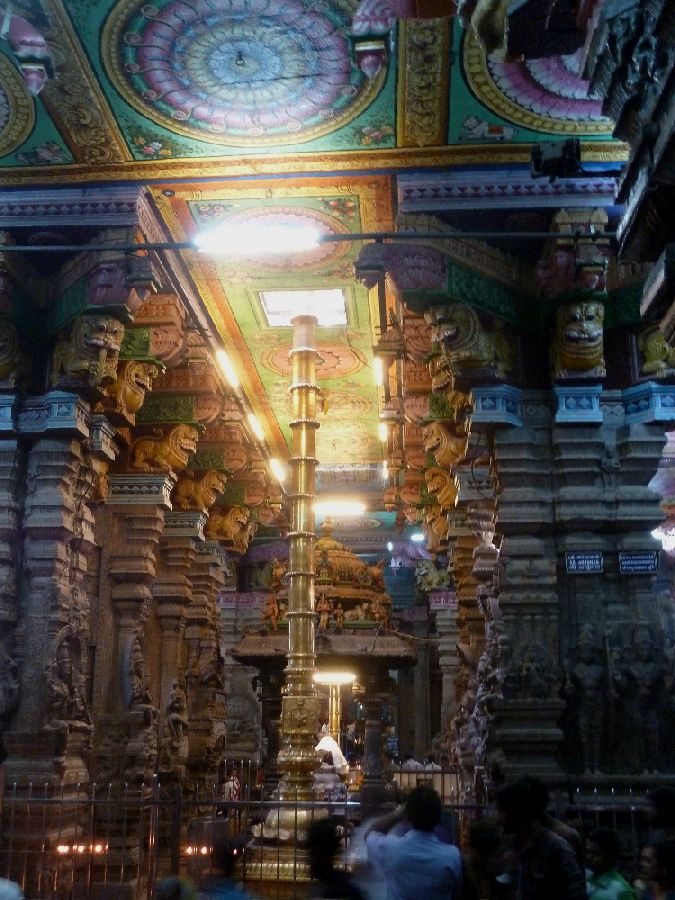
Meenakshi Amman, interior
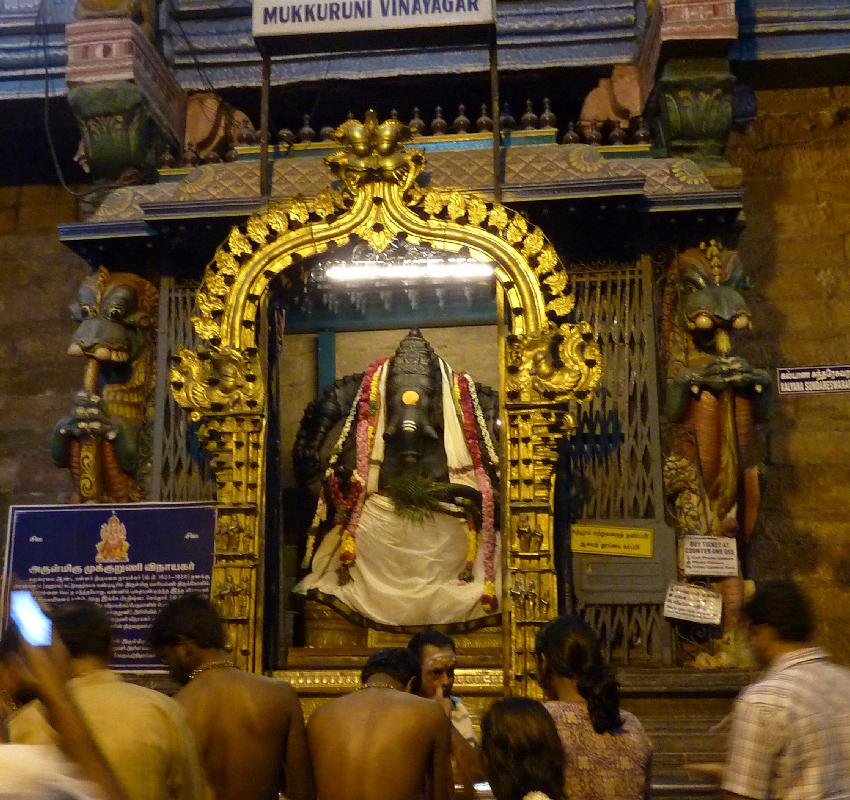
Mikkuruni Vinayagar at Meenakshi Amman Temple

Temple rangoli, kolam
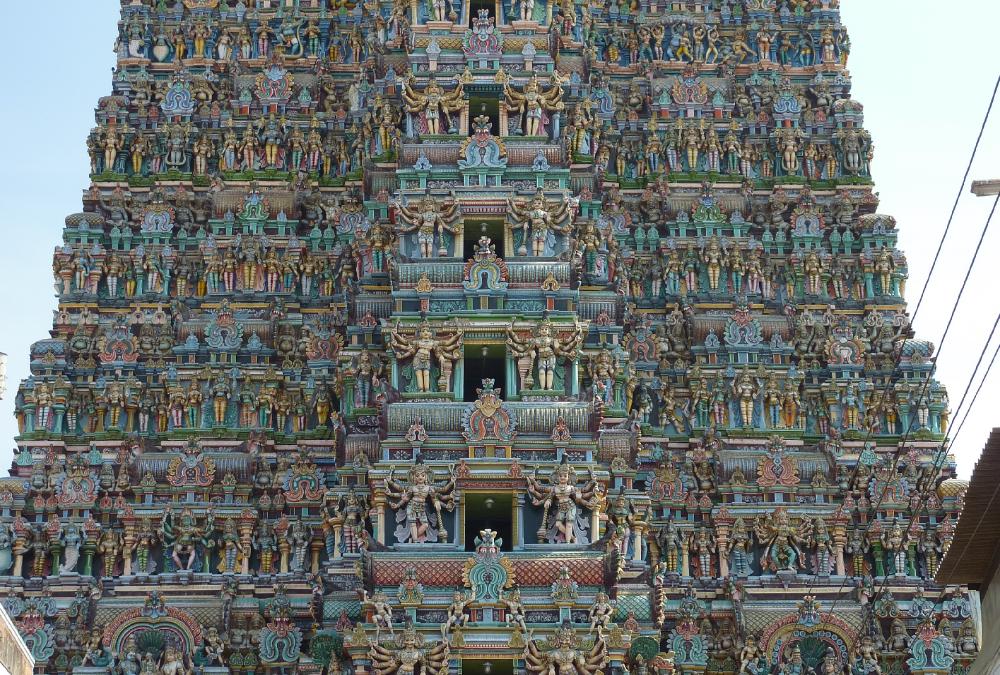
Closer view of the gopuram
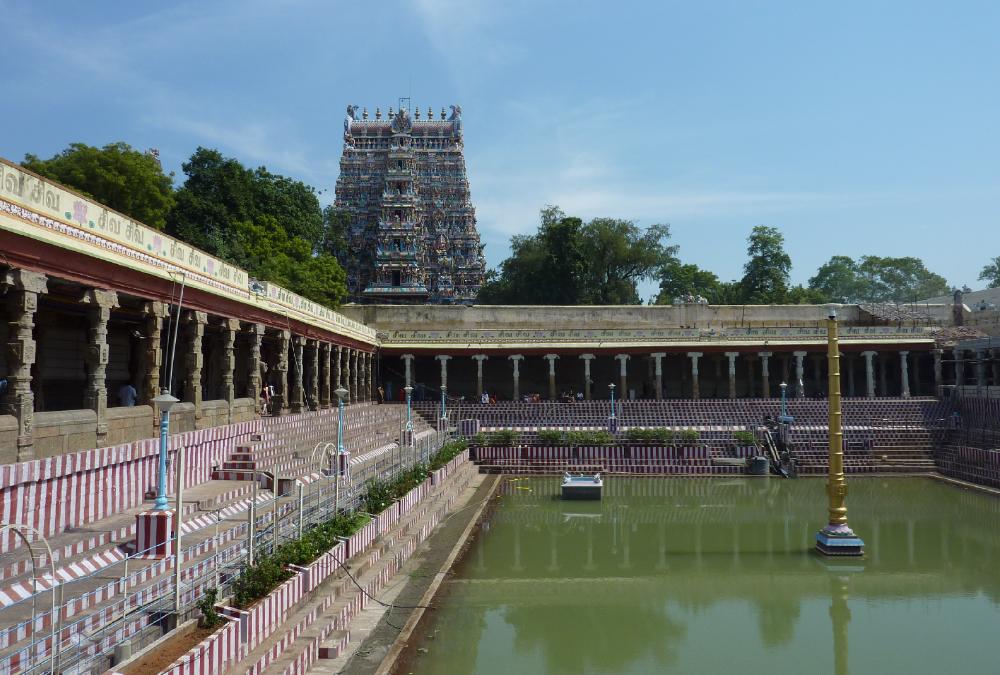
Temple tank (pool) courtyard
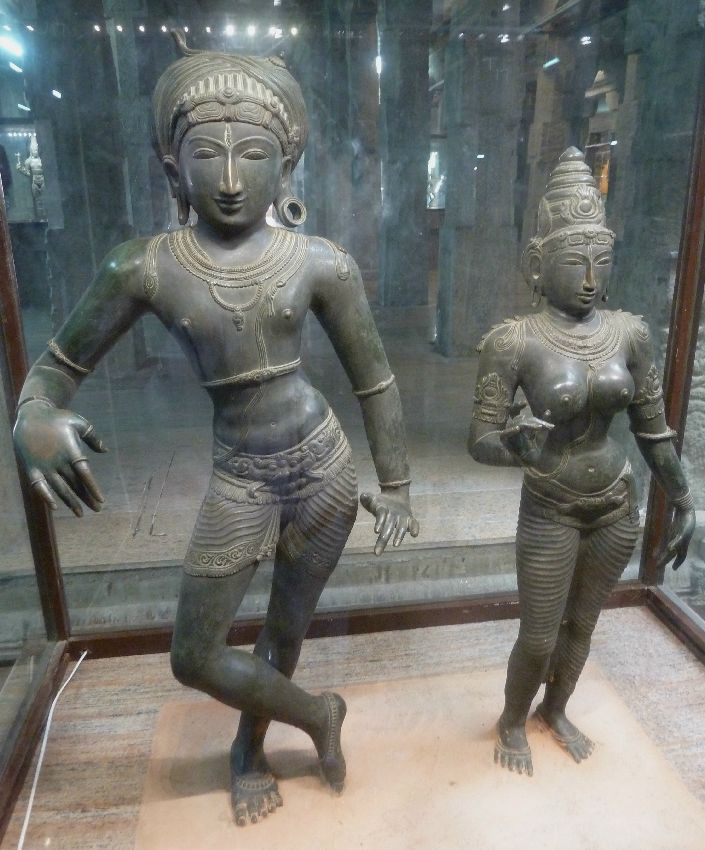
Temple museum statues
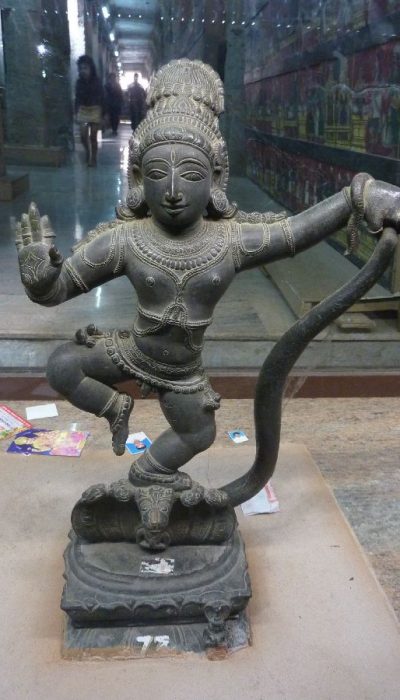
Temple museum statues
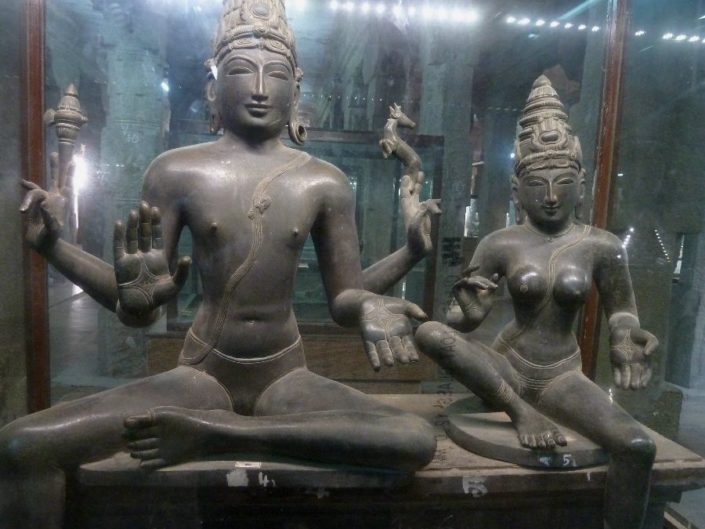
Temple museum statues
Pregabalin purchase canada Tiruchirappalli (Trichy): In Trichy, we visited three temples—
(1) the Sri Jambukeshwarar Temple dedicated to Shiva, Parvati, and the ‘element’ of water (this temple is one of the five elemental temples of Shiva, the ‘elements’ being land, water, air, sky, and fire);
(2) the Rock Fort temple complex (437 stone cut steps), which actually consists of two main temples, the Sri Thayumanaswamy Temple (halfway to the top) and the Vinayaka Temple (at the summit of the rock outcrop); and
(3) the Sri Ranganathaswamy Temple—
The Sri Ranganathaswamy Temple . . . is a Hindu temple dedicated to Ranganatha, a reclining form of Hindu deity, Vishnu located in Srirangam, Tiruchirapalli, Tamil Nadu, India. Constructed in the Dravidian style of architecture, this temple is glorified in the Divya Prabandha, the early medieval Tamil literature canon of the Alvar saints from the 6th–9th centuries AD and is counted as the first and foremost among the 108 Divya Desams dedicated to Vishnu.
It is one of the most illustrious Vaishnava temples in South India, rich in legend and history. Its location, on an island rendered it vulnerable to the rampaging of invading armies – Muslim and European – which repeatedly commandeered the site for military encampment. The main entrance, known as the Rajagopuram (the royal temple tower), rises from the base area of around 13 cents (around 5720 sq ft) and goes up to 237 feet, moving up in eleven progressively smaller tiers. . . . the temple is often listed as the largest functioning Hindu temple in the world, the still larger Angkor Wat being the largest existing temple. The temple occupies an area of 156 acres (631,000 m²) with a perimeter of 4,116m (10,710 feet) making it the largest temple in India and one of the largest religious complexes in the world.
FROM WIKIPEDIA, “Sri Ranganathaswamy Temple, Srirangam”

Sri Jambukeswarar Temple entrance

Sri Jambukeswarar Temple interior

A gopuram, detail (hi-res)
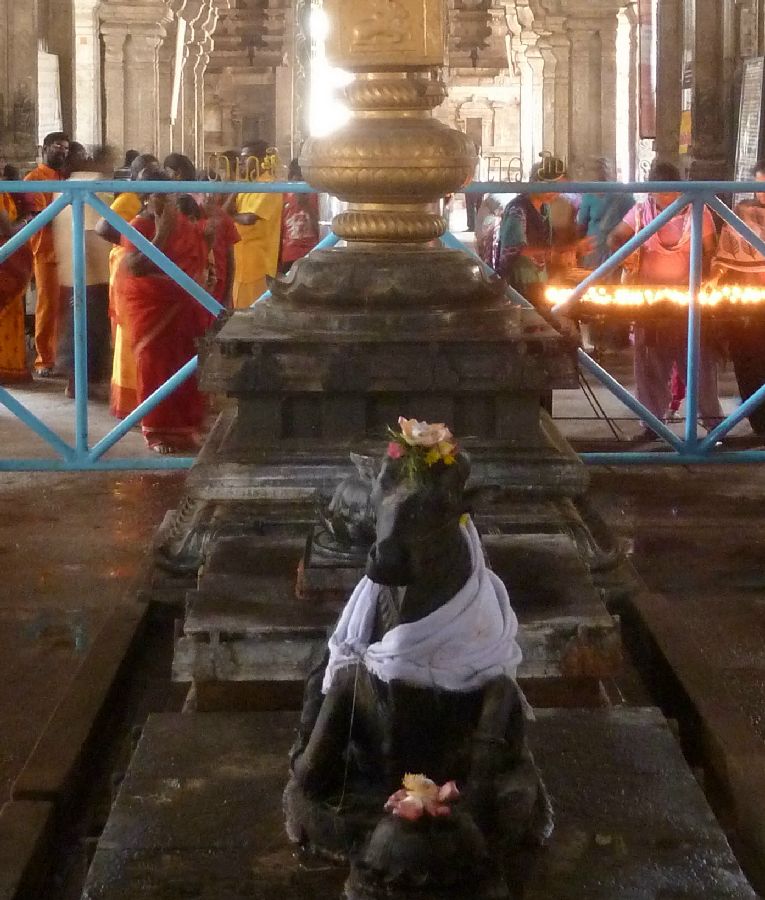
Sri Jambukeswarar Temple, Nandi
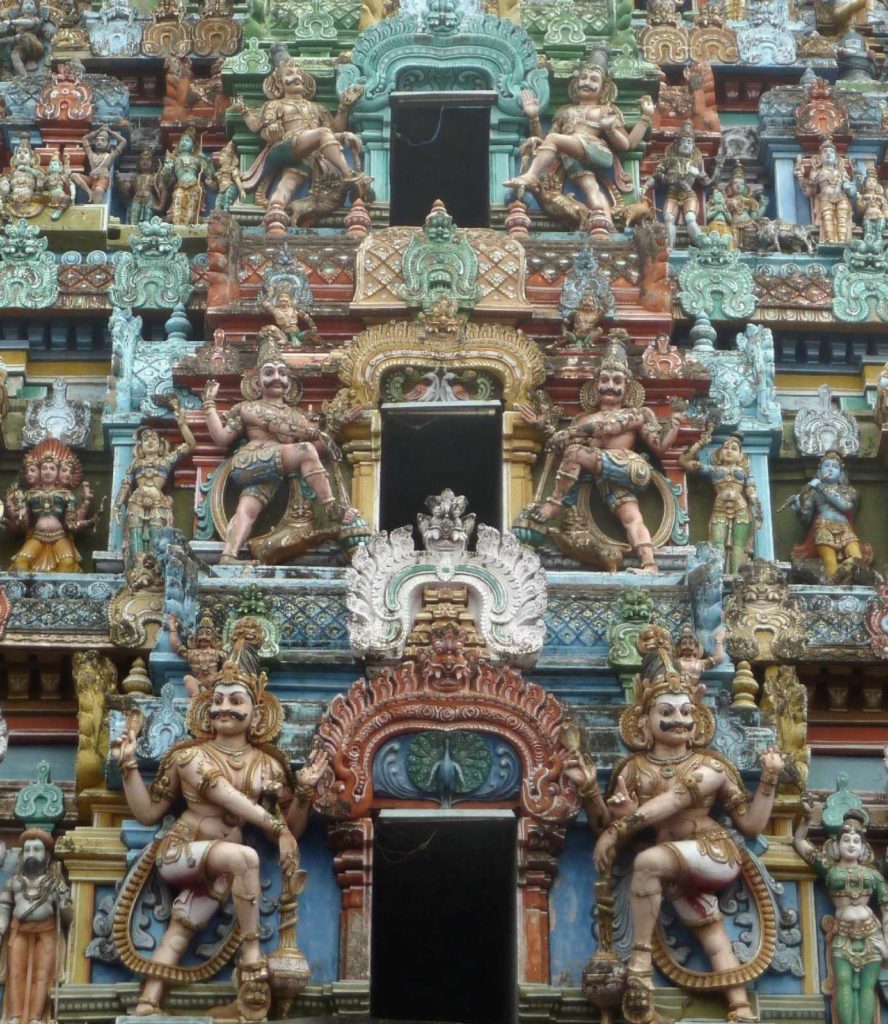
Sri Jambukeswarar Temple gopuram, detail (high resolution)
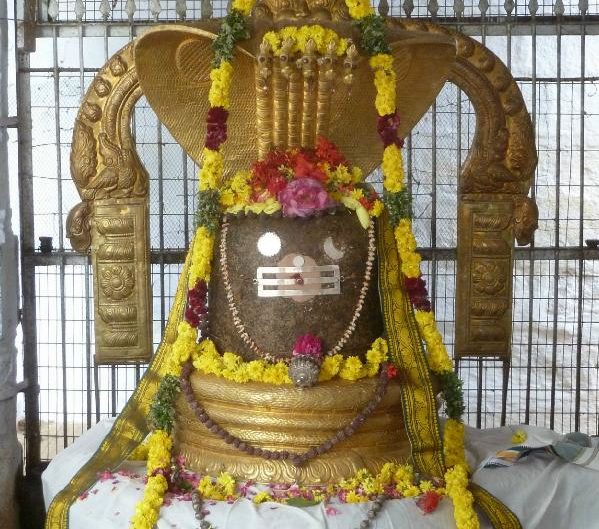
Shiva lingam at Sri Jambukeswarar
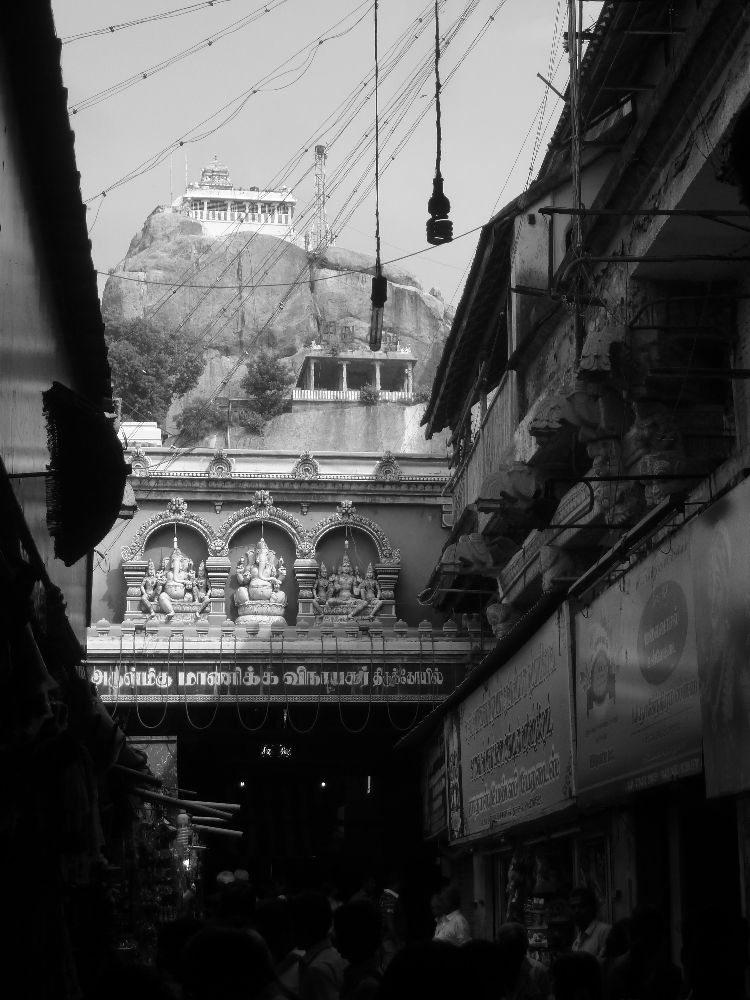
Rock Fort Temple complex
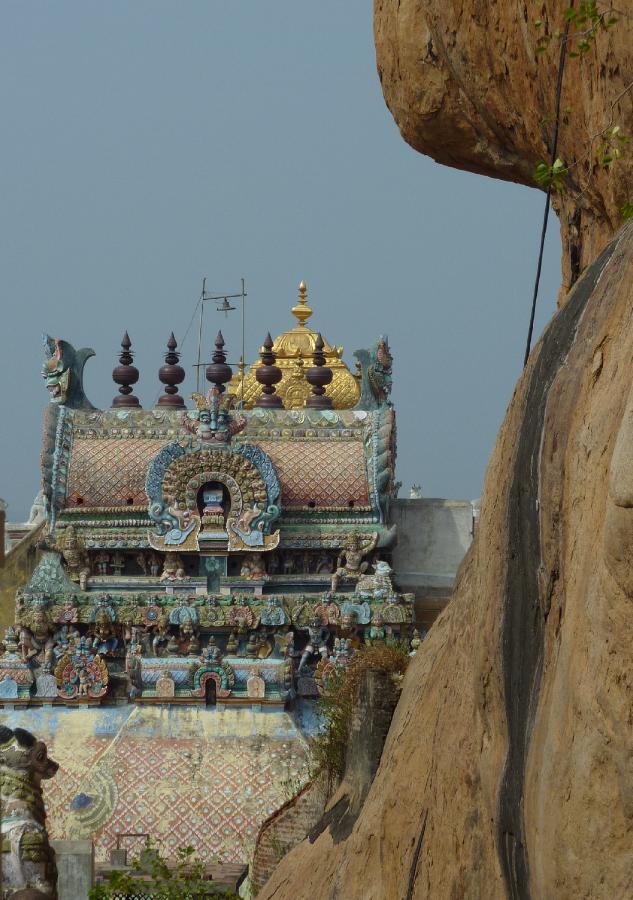
Rock Fort Temple
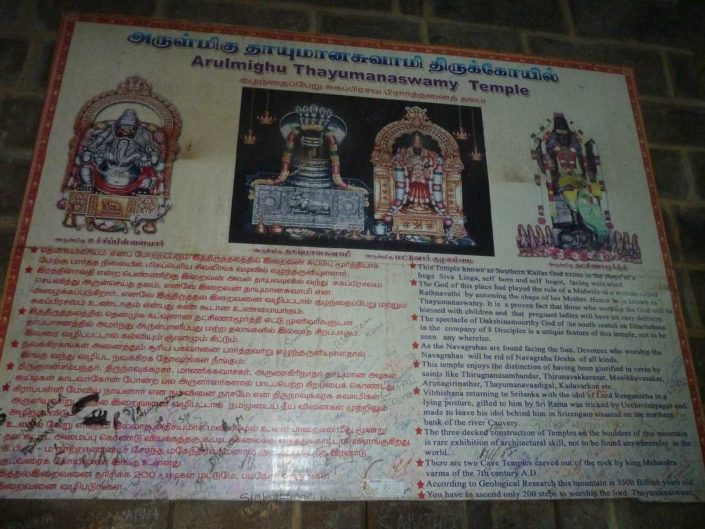
Signage
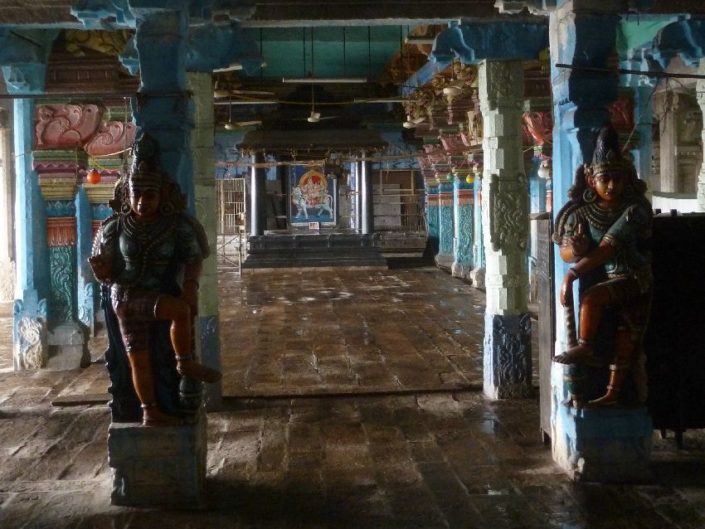
An interior
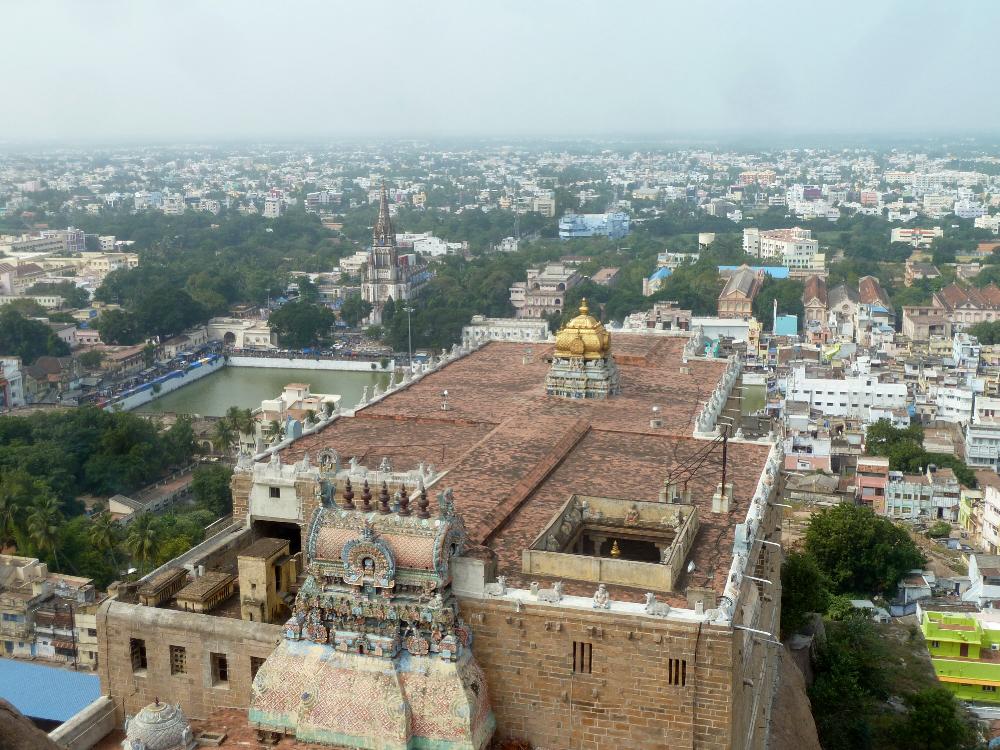
Rock Fort with St. Joseph College Church in background

Stairway to Vinayaka Temple

Raganatha (a form of Vishnu reclining)
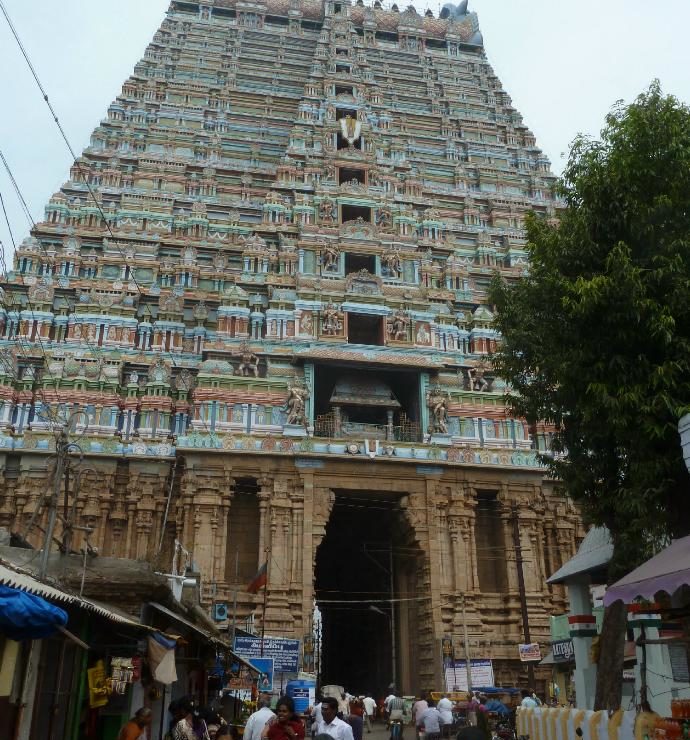
Inside the first gopuram
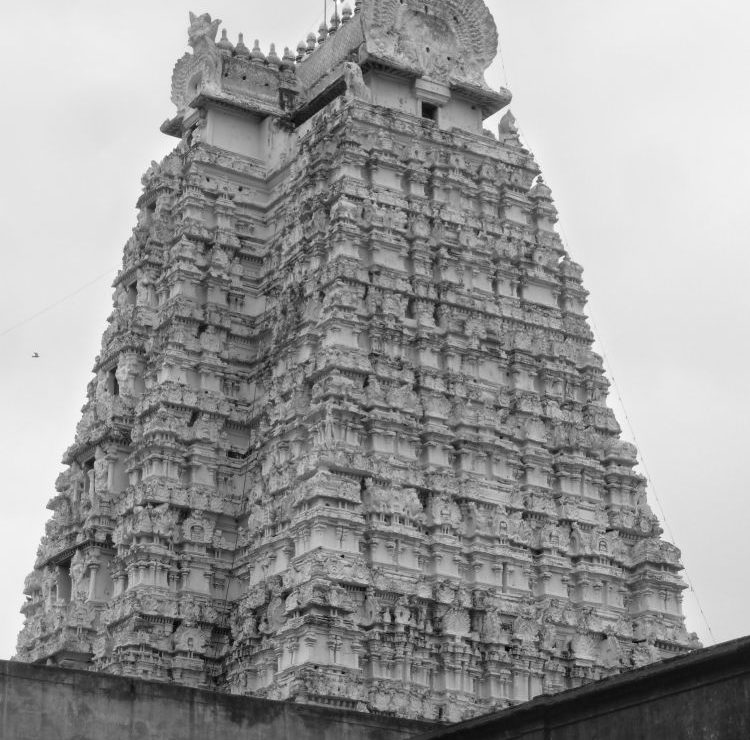
Unpainted gopuram
or vimana

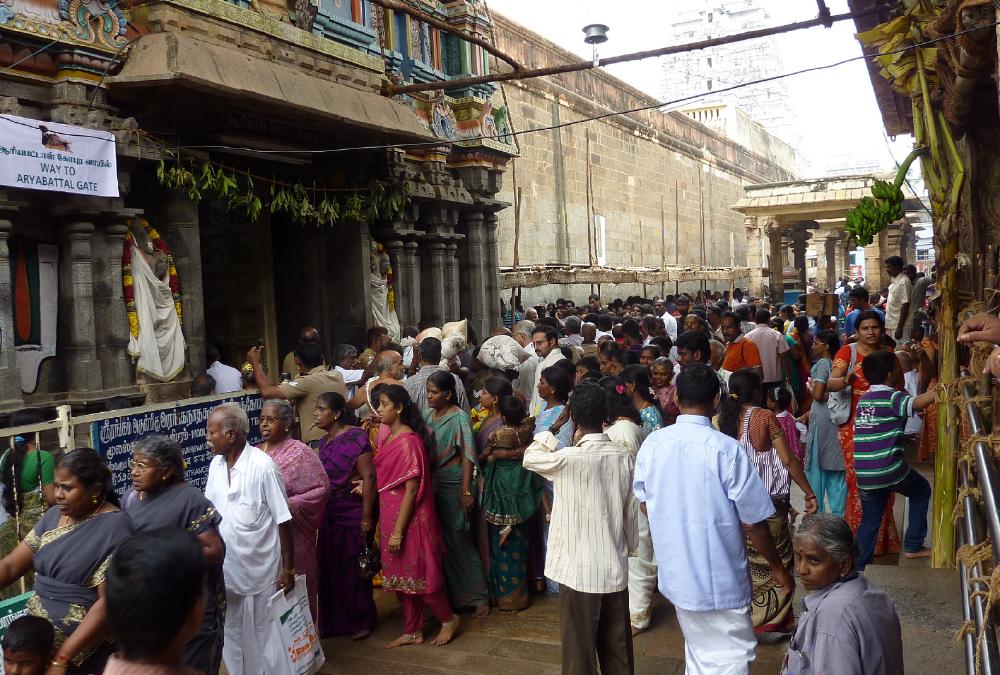
Crowd awaiting entry to
inner precincts

Footware left near
entrance
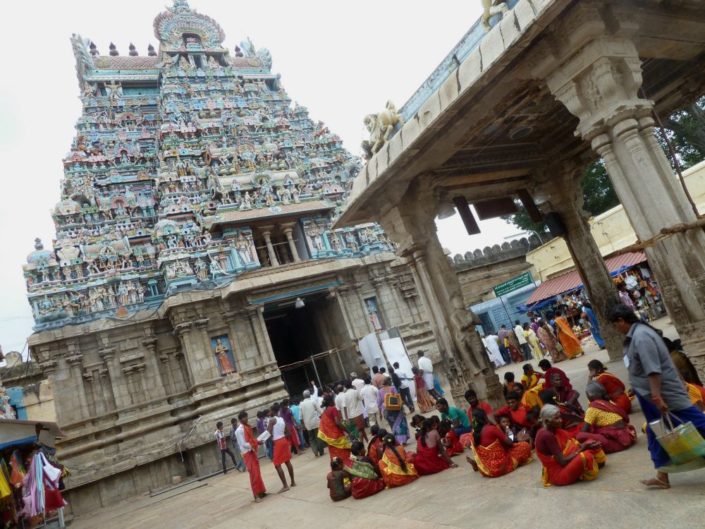
Devotees seated inside

Equestrian detail
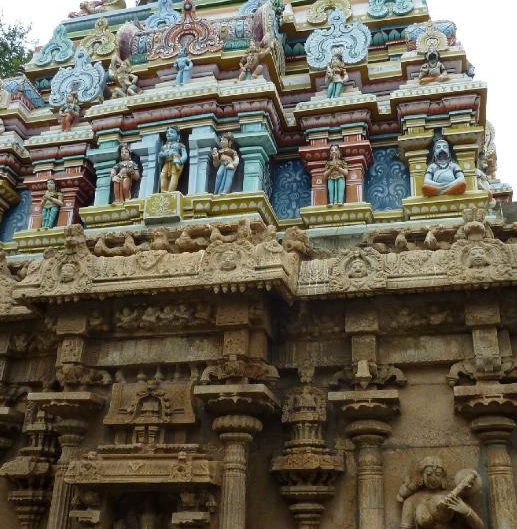
Unknown structure
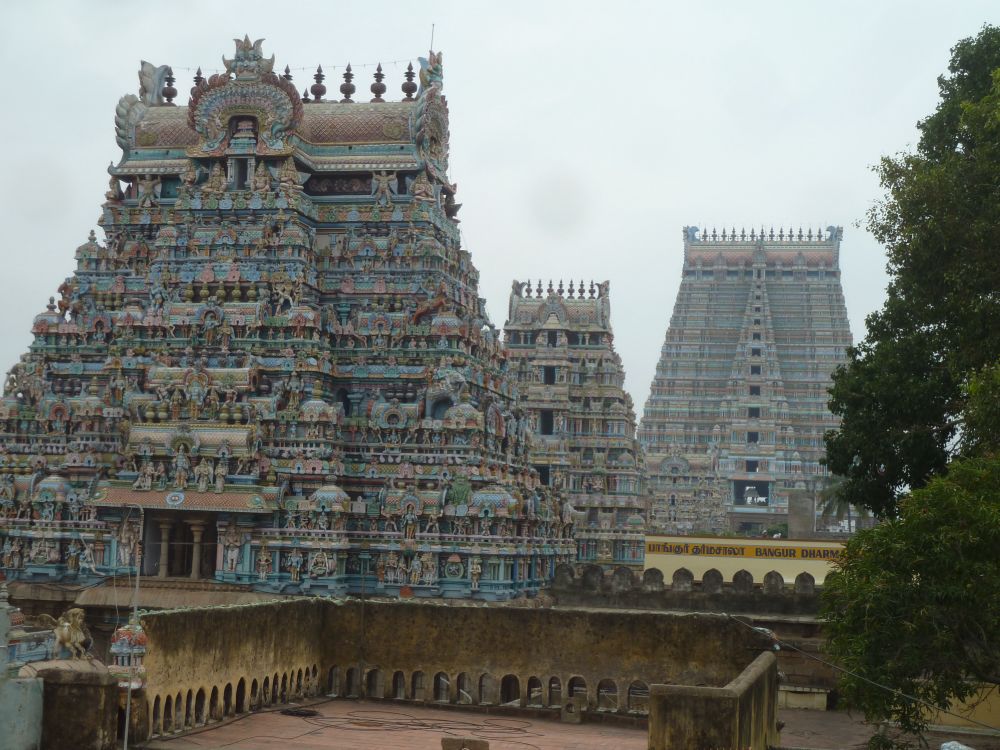
Rooftop view,
3 gopurams in succession

Unknown structure
Tanjore (Thanjavur): In Tanjore, we visited the magnificent Brihadishwara Temple toward the close of the day when the sun was sinking low. This Hindu temple is of an appearance and style considerably different from the others we’d visited recently. The structures in the temple compound are made of light reddish-brown sandstone–plain and unpainted, the earthy colors rise into the sky. Construction began in 1010 CE by Chola king Raja Raja (literally, ‘king of kings’). The Cholas are one of three royal lineages of southern India that go back to antiquity, along with the Cheras and the Pandyas. The temple is considered one of the crowning glories of the ancient Chola dynasty. The influence of Chola culture, at its height during this period, extended far into Southeast Asia
. . . South Indian Hindus expanded their cultural umbrella, sometimes literally: the Southeast Asian use of umbrellas as royal regalia traces directly back to South India. So do the statues of apsaras (heavenly nymphs), the richly embellished jewelry of court fashions from Angkor in Cambodia to Ayutthaya in Thailand (the latter name derived from the Ramayana kingdom of Ayodyah), the centrality of temples to daily life, the sense of form and space used in stone and bronze sculptures, and a common usage of Sanskrit in classical literature. Bali remains a Hindu inland thanks to the cross-cultural connections of this period, and every Thai king for the past 200 years has been named Rama in honour of the prince of the Indian epic.
There’s a legend of the founding of Angkor Wat, with its Chola-esque step pyramids and bas reliefs of enormous Khmer faces, which elegantly sums up this link: a Cambodian naga (serpent-dragon) princess would not marry any suitor until she was approached by an Indian warrior, who cast his spear into her fertile paddies (no, really).
FROM Lonely Planet: South India, Lonely Planet Publications Pty Ltd 2009, p. 435.
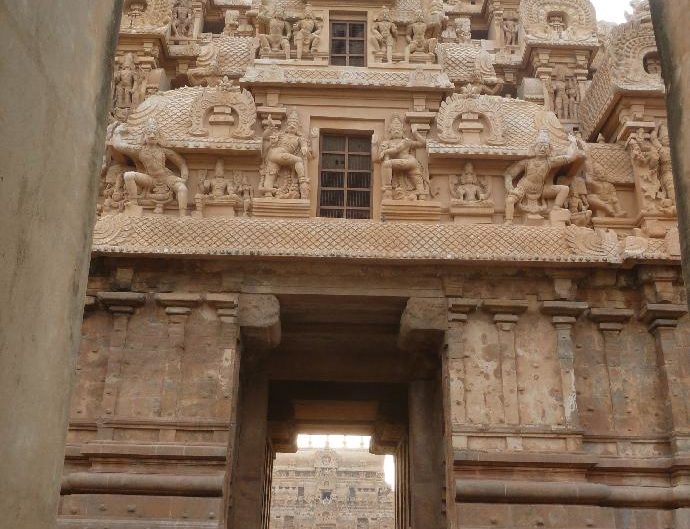
Entrance
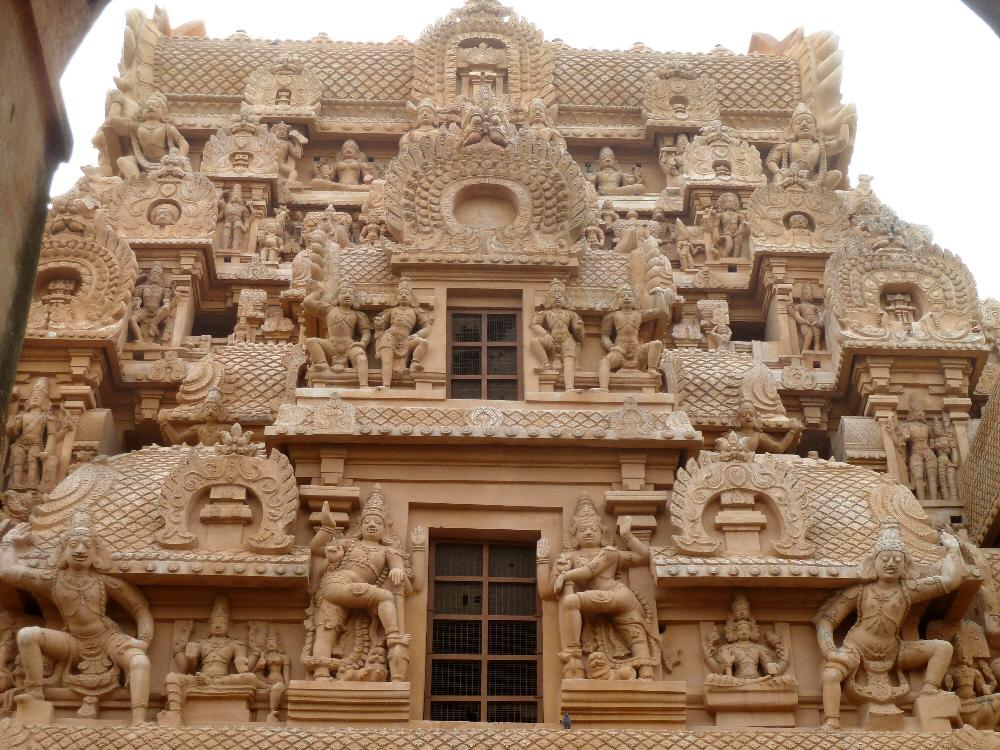
Gopuram, detail

Two Gopurams from interior courtyard
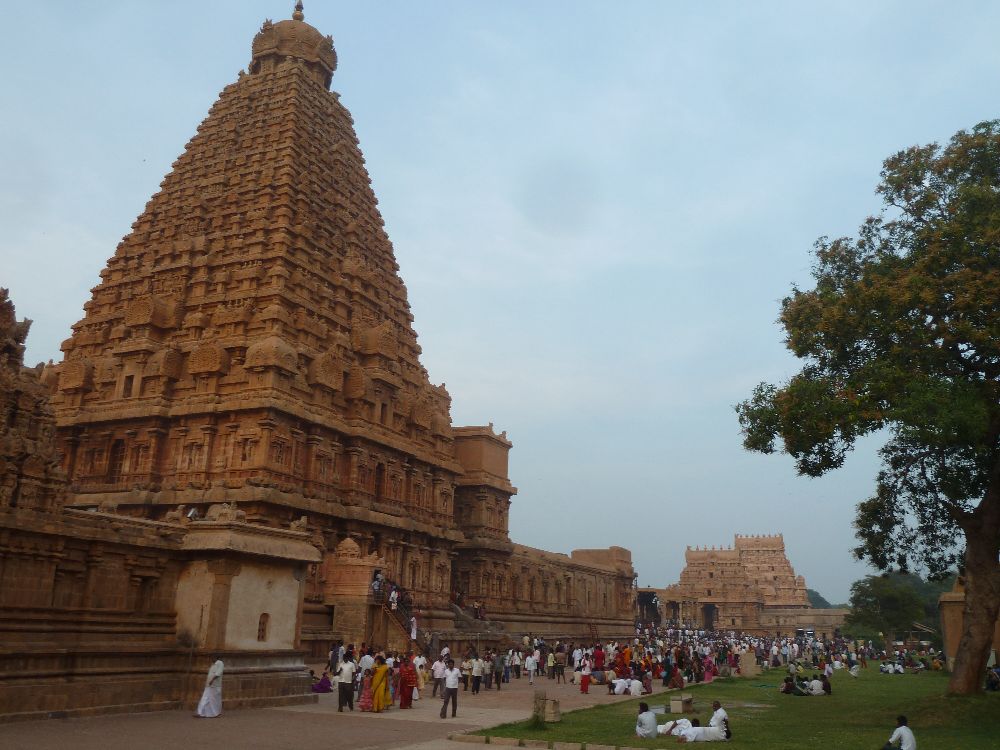
Main Vimana (tower) with 2 Gopurams in the distance
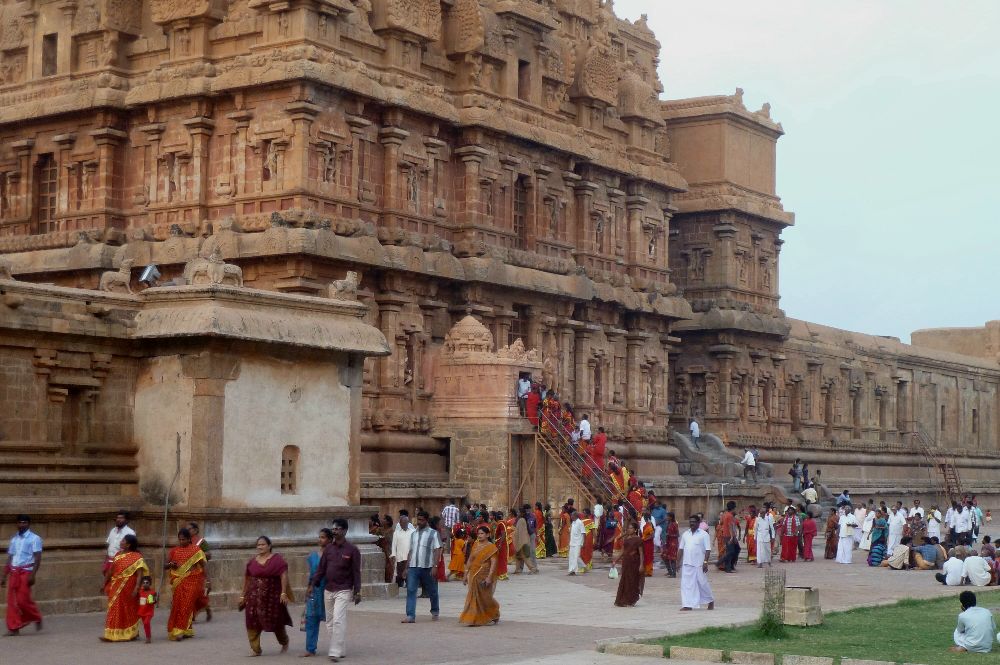
Vimana base, with pilgrims
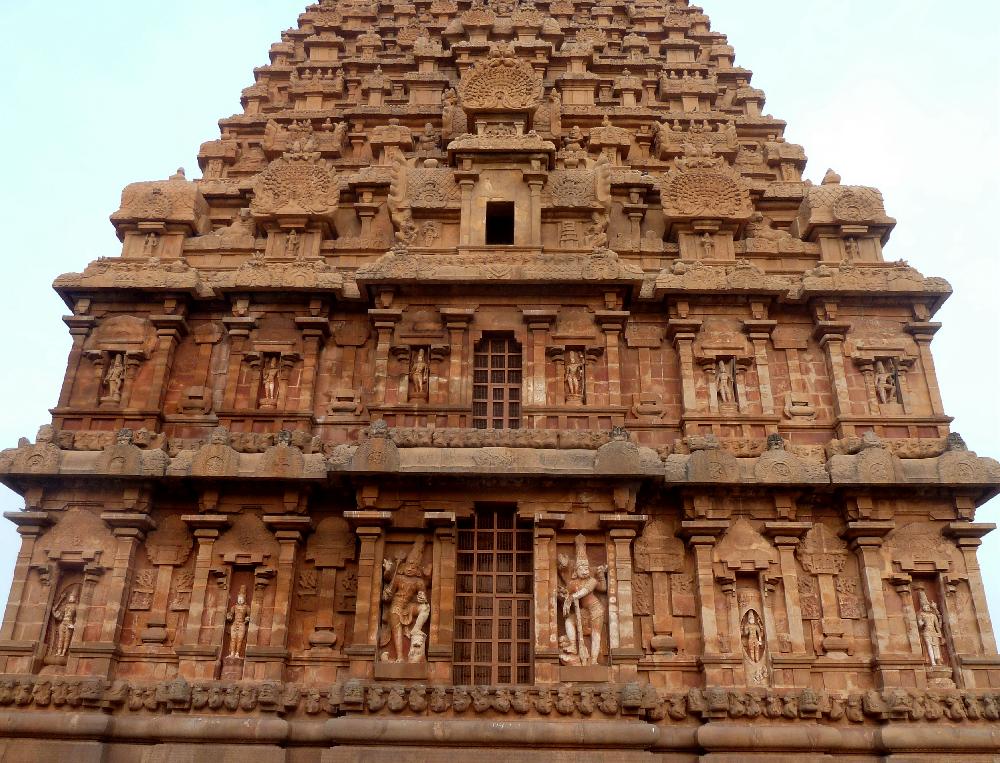
Vimana, detail
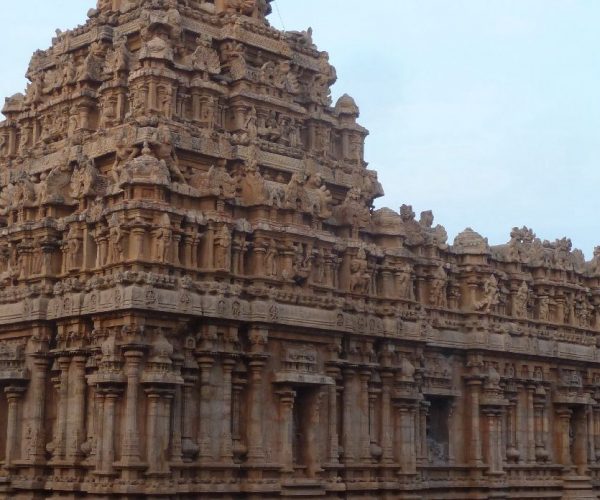
A smaller temple
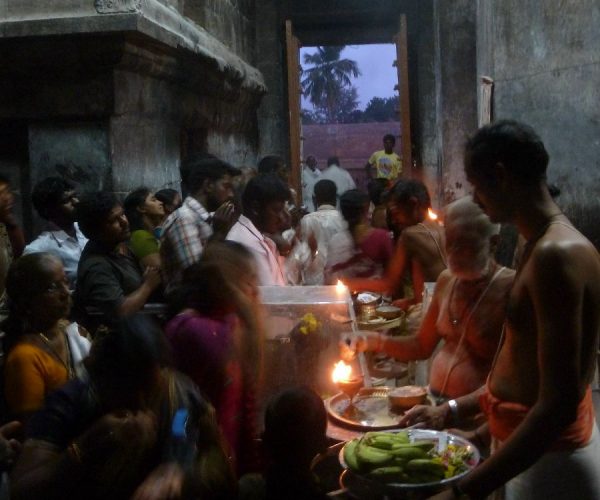
Worshippers inside main Vimana

Small temple with main Vimana in background
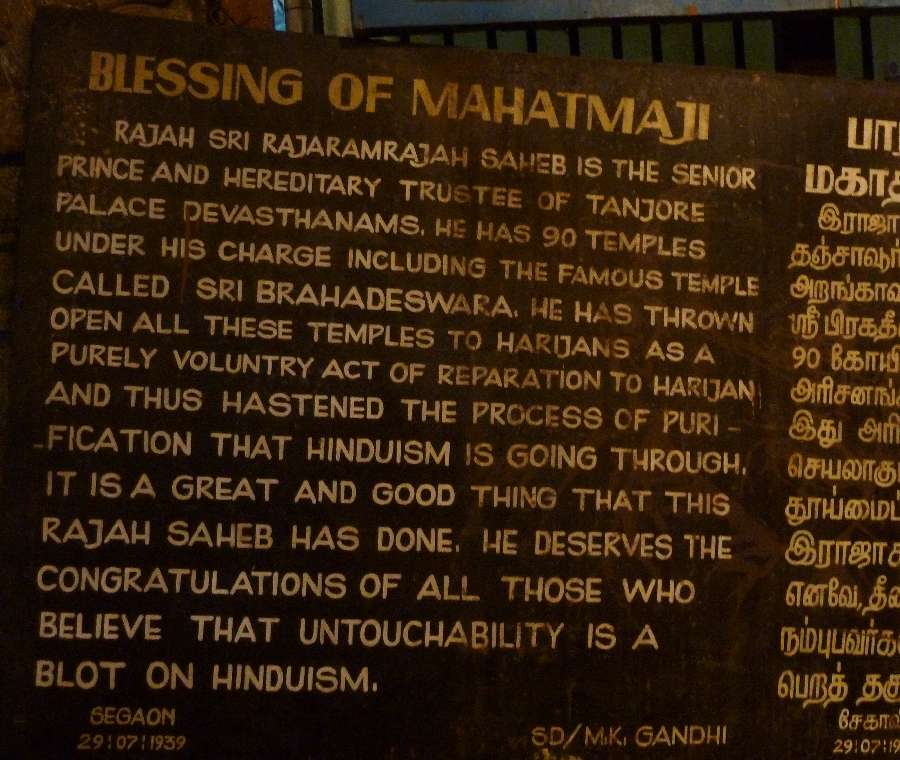
Blessing of Mahatmaji
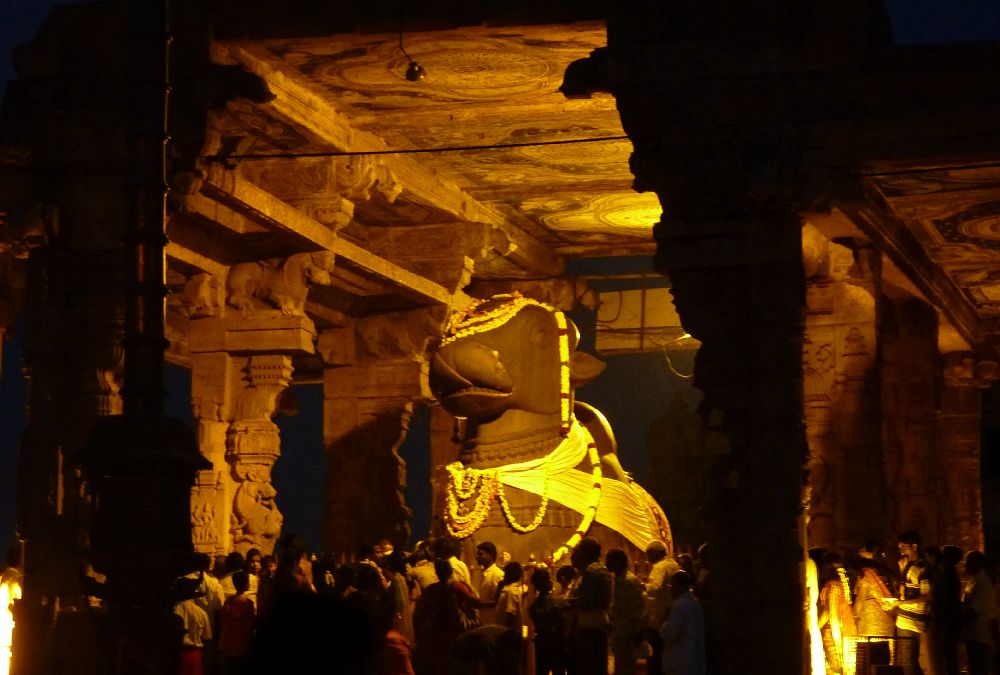
Nandi
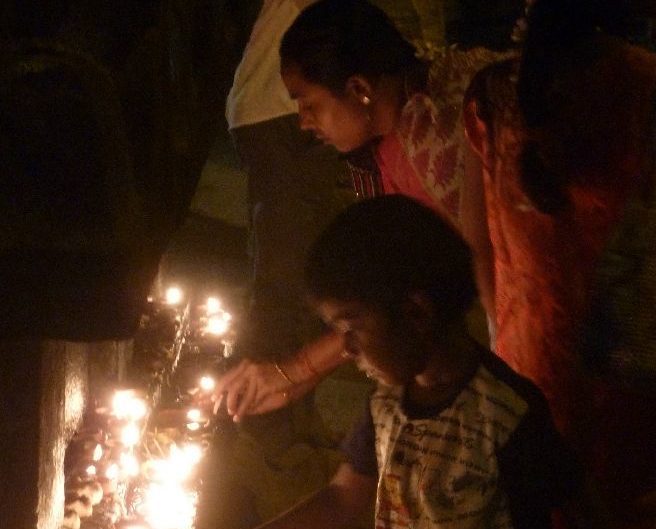
Lighting a candle
Mahabalipuram (Mamallapuram): On the way back to Chennai from Tanjore, we stopped at Mahabalipuram, where we saw a few of the ruins and rock carvings before the sun set and the sites closed for the day.
Mahabalipuram was a 7th century port city of the South Indian dynasty of the Pallavas around 60 km south from the city of Chennai in Tamil Nadu. The name Mamallapuram is believed to have been given after the Pallava king Narasimhavarman I, who took on the epithet Maha-malla (great wrestler), as the favourite sport of the Pallavas was wrestling. It has various historic monuments built largely between the 7th and the 9th centuries, and has been classified as a UNESCO World Heritage Site.
. . . .
The monuments are mostly rock-cut and monolithic, and constitute the early stages of Dravidian architecture wherein Buddhist elements of design are prominently visible. They are constituted by cave temples, monolithic rathas (chariots), sculpted reliefs and structural temples. The pillars are of the Dravidian order. The sculptures are excellent examples of Pallava art.
FROM Wikipedia, “Mahabalipuram,”
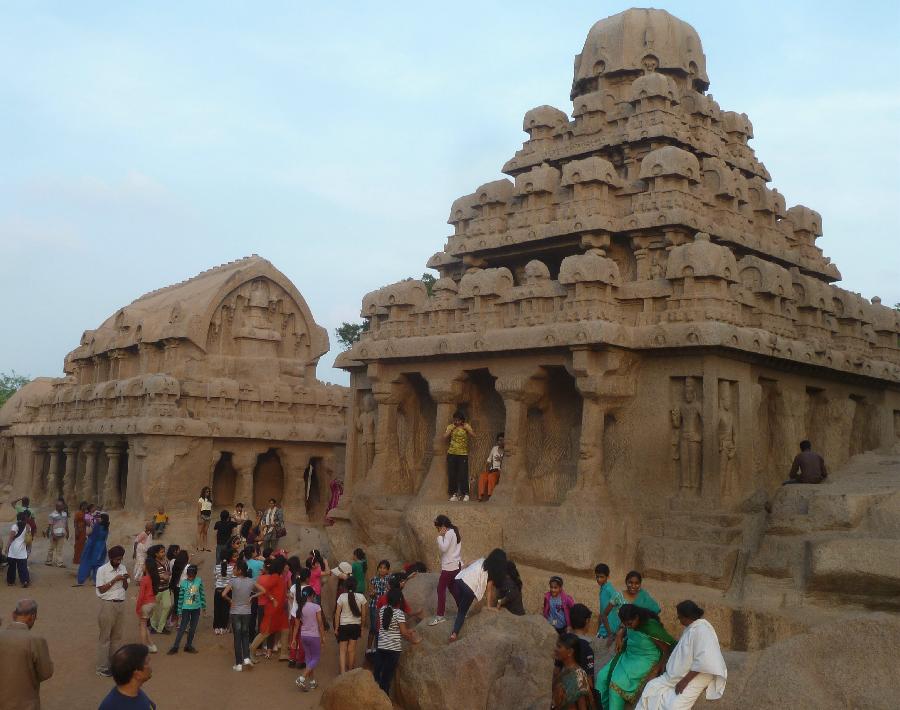
Dharmaraja Ratha with Bhima Ratha in background
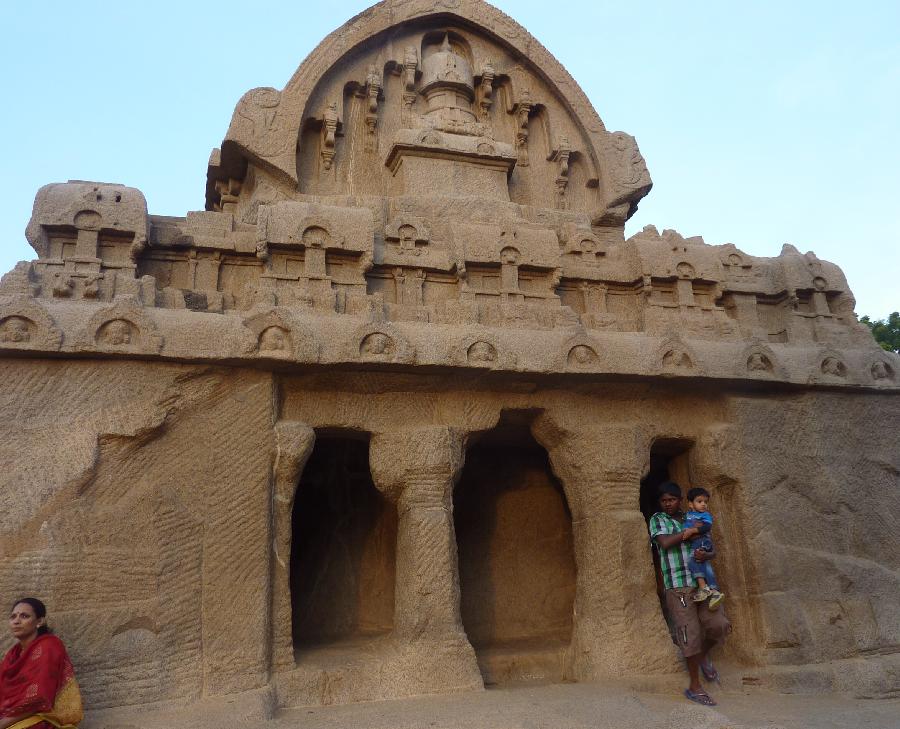
Bhima Ratha
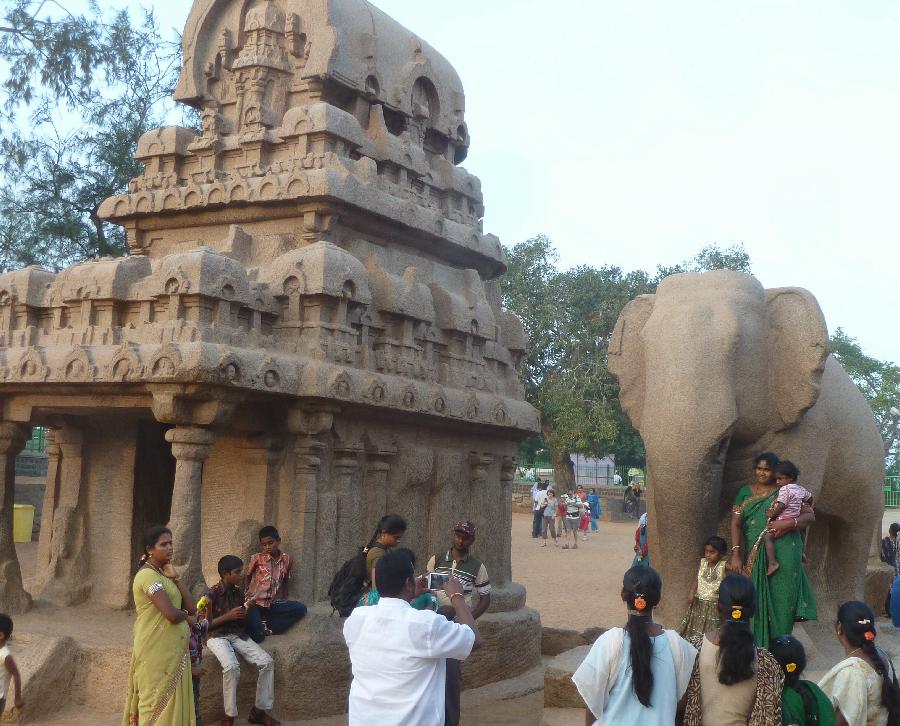
Nakul Sahdeva Ratha with stone elephant
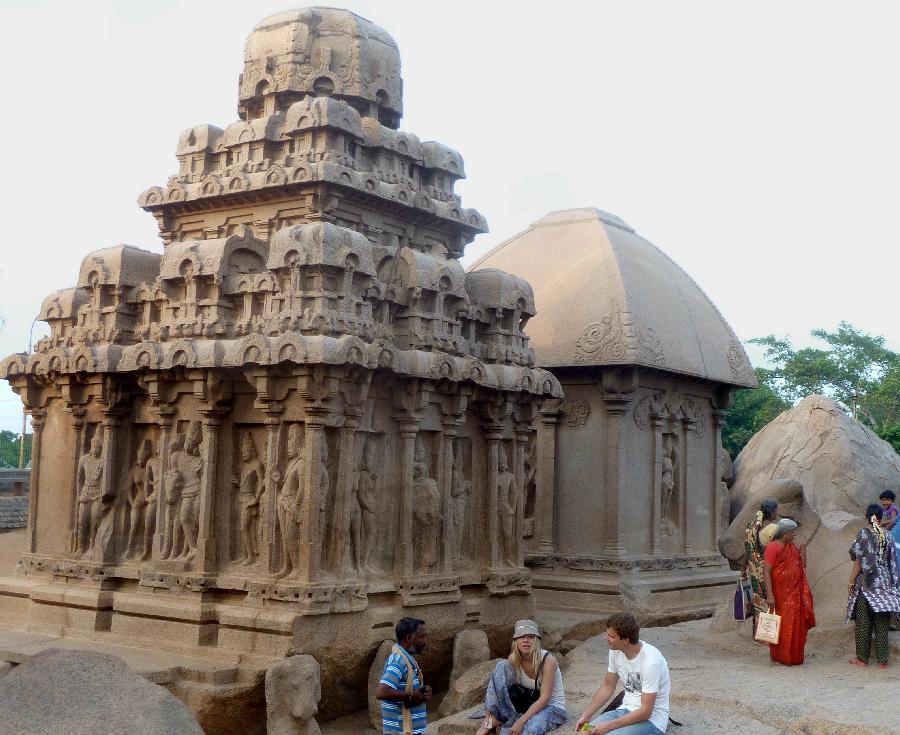
Arjuna and Draupadi Rathas with Nandi rock sculpture
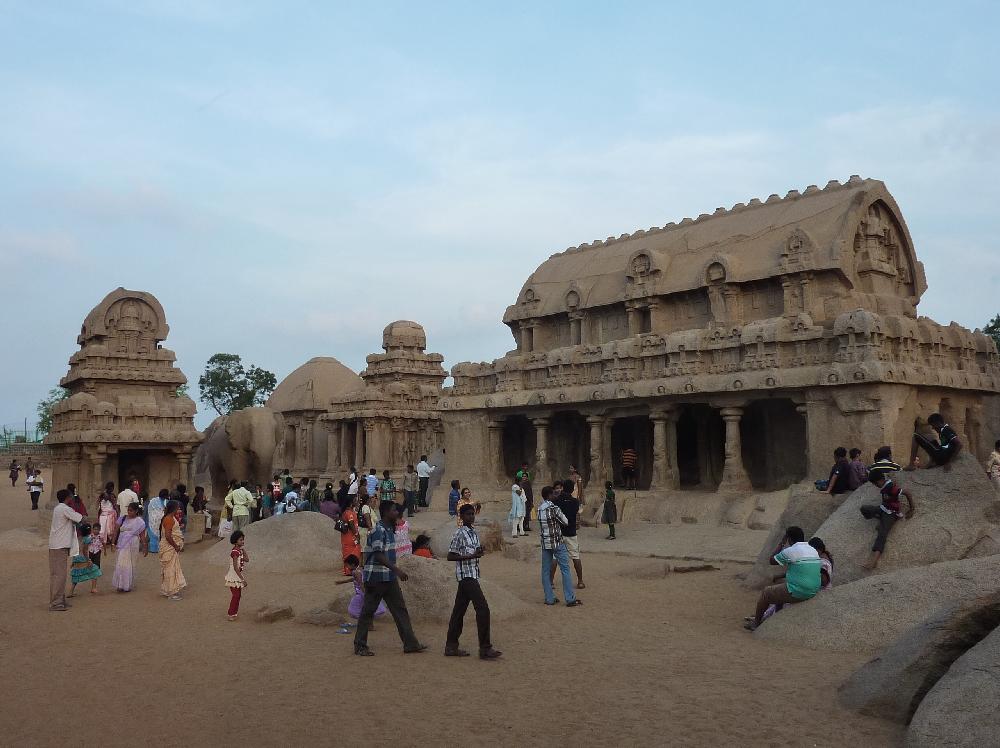
Rathas
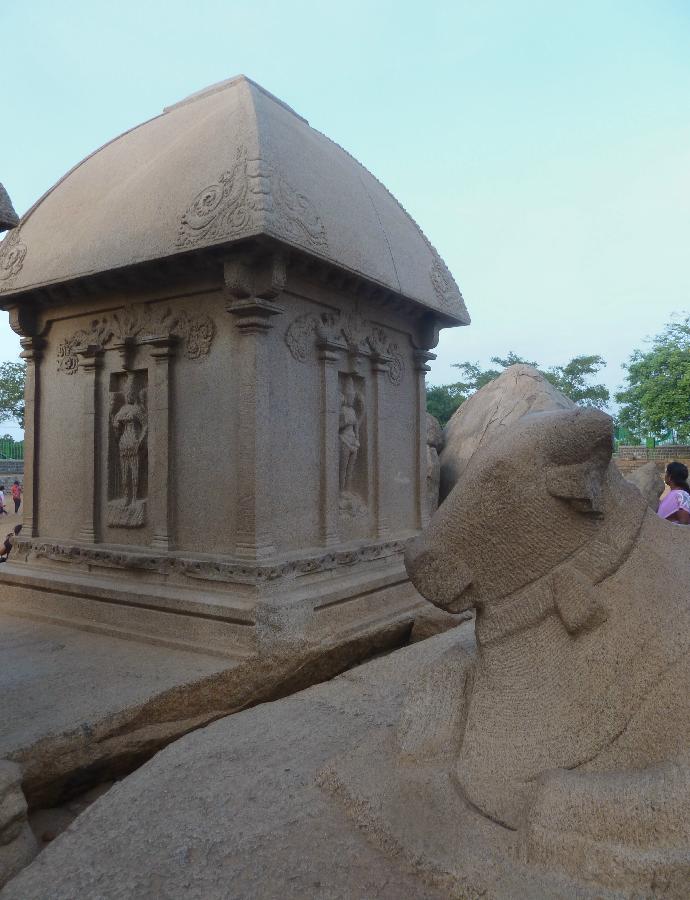
Draupadi Ratha with Nandi sculpture
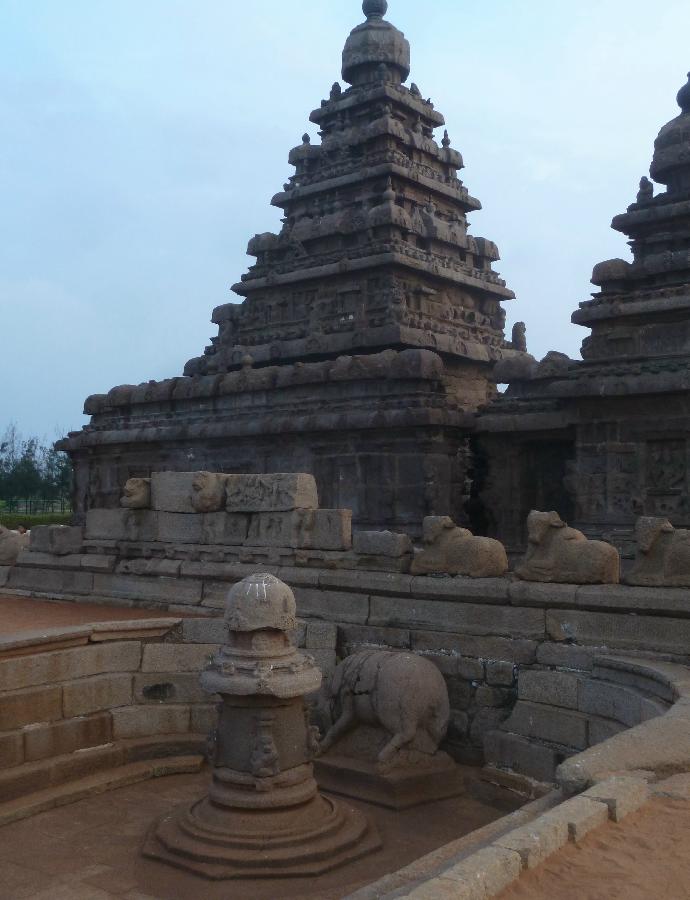
Shore Temple with lingam
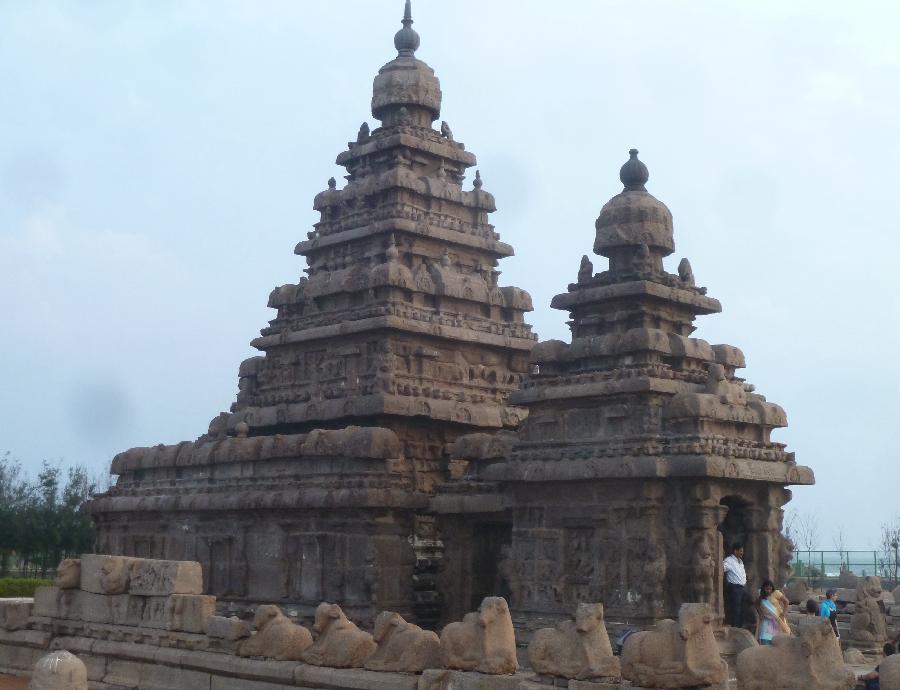
Shore Temple
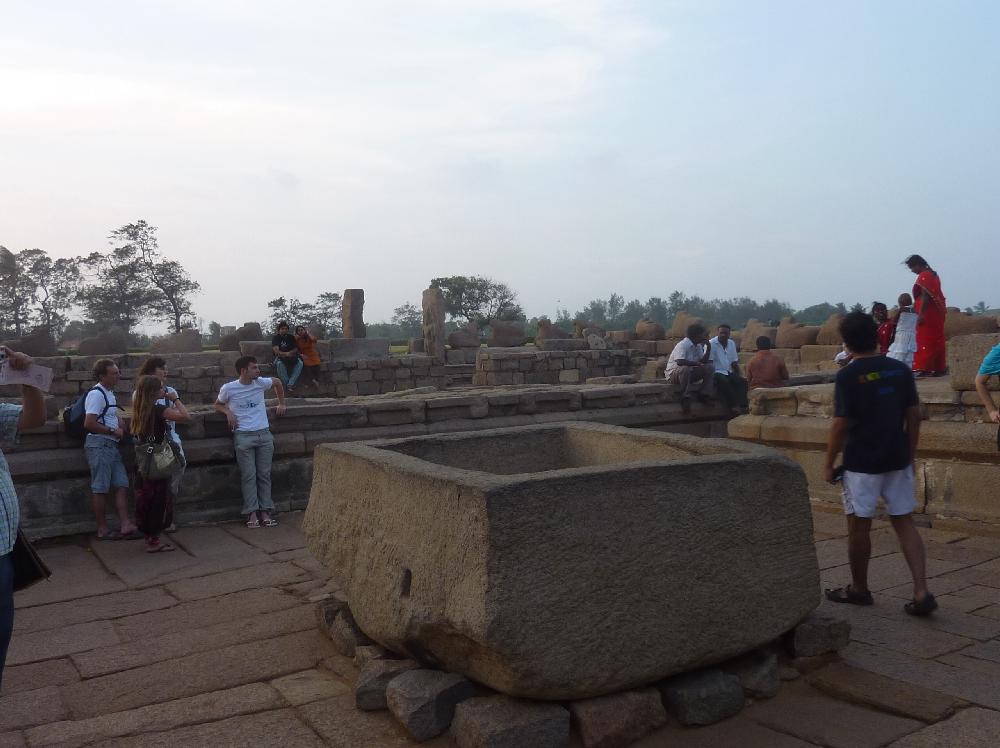
Ruins
I welcome any questions or comments.
To contact me (Keith Stanley), please email me at kesta1001@yahoo.com.
Here are some links to others of my pages:
Home Page